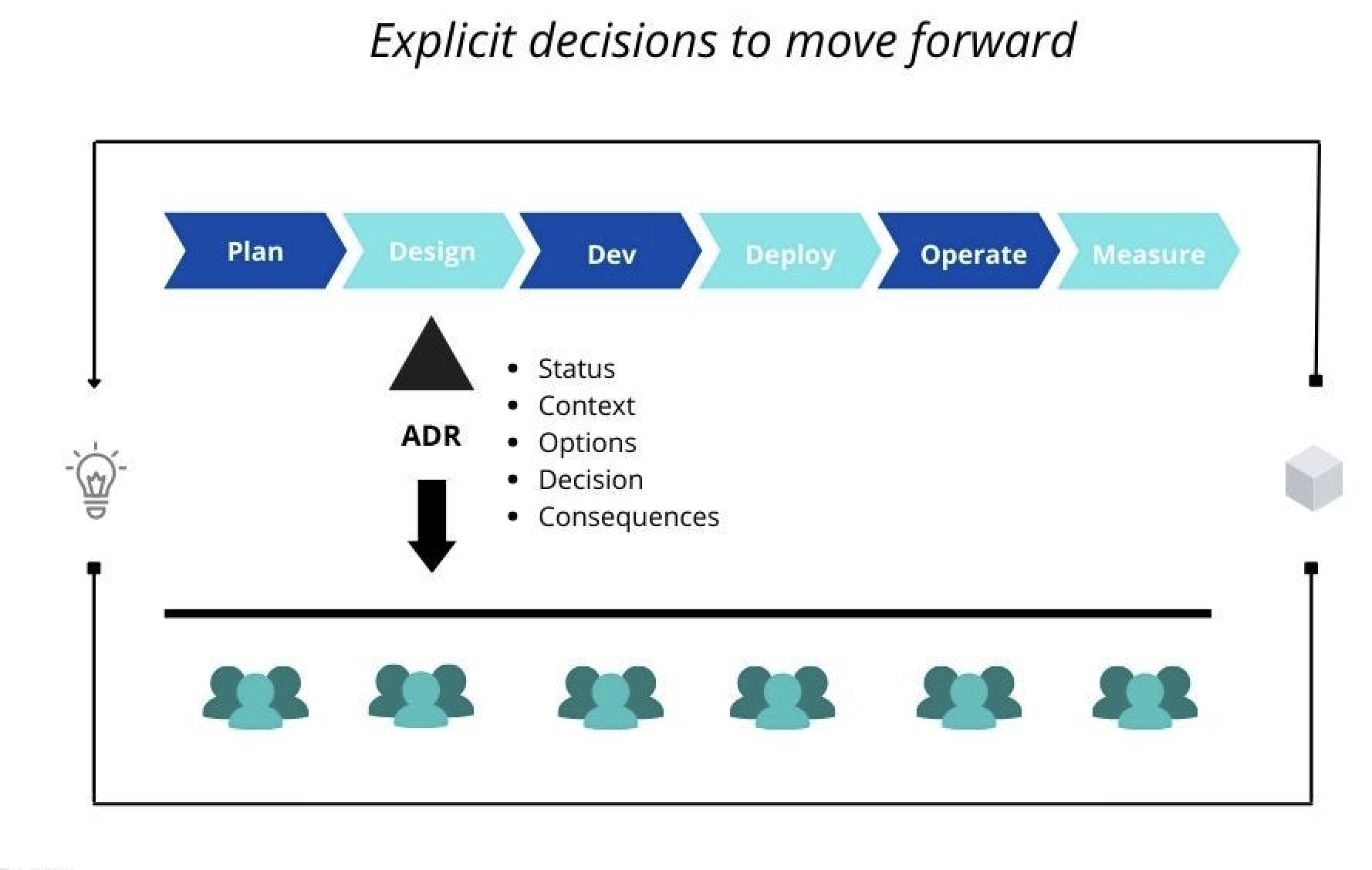
In the context of software development, "ADR" stands for "Architectural Decision Record." An ADR document is a way to capture and document important architectural decisions made during the development process of a software project.
An architectural decision refers to a significant choice related to the software's architecture, design, or implementation. This could include decisions about the overall system structure, the selection of technologies, the integration of different components, or the handling of specific design challenges.
Purpose
The purpose of an ADR document is to provide a clear and concise record of the decision-making process, rationale, and the chosen solution. It serves as a reference for developers, architects, and other stakeholders involved in the project, helping them understand the reasoning behind certain design choices and ensuring consistency and coherence in the software's architecture.
Parts
Typically, an ADR document includes information such as:
- Title and identification number: A descriptive title and a unique identifier for the decision record.
- Context: A brief description of the problem or challenge that prompted the decision.
- Decision: The chosen solution or course of action.
- Rationale: The reasons and justifications behind the decision, including trade-offs, benefits, and potential risks.
- Consequences: The expected impact and implications of the decision on the software system, its architecture, performance, maintainability, and other relevant factors.
- Alternatives: A summary of alternative options considered and the reasons they were not chosen.
- Status: The current status of the decision, such as "proposed," "accepted," or "deprecated."
- Author and date: The name of the person or team responsible for the decision and the date of its documentation.
By maintaining an ADR document, software development teams can improve transparency, facilitate knowledge sharing, and provide a historical record of the decision-making process, which can be valuable for future reference, system evolution, and collaboration among team members.
Example
This ADR template is simplified and should be adapted based on the specifics of your project and organization. Typically, you'd include more details in the Context and Decision sections, and possibly link to other ADRs or external documents for more background information.
ADR 1: Use React for Frontend Development
Status: Accepted
Date: [Insert Date Here]
Context: Our web application requires a dynamic and responsive user interface to provide an engaging user experience. We need a robust framework that supports component-based architecture, allowing for reusable UI components and efficient data management across the application.
Decision: After evaluating several front-end frameworks, including Angular, Vue.js, and React, we have decided to use React for the following reasons:
- Component-Based Architecture: React's component-based approach makes it easy to reuse code and manage the application's state more efficiently.
- Strong Community and Ecosystem: React has a large community and a rich ecosystem of tools and libraries, which will likely speed up development and offer solutions to common problems we might face.
- Performance: React's virtual DOM improves app performance, making it a suitable choice for our needs in delivering a smooth user experience.
- Learning Curve: The team has some experience with React, and its learning curve is relatively gentle compared to other frameworks, which means faster ramp-up times for new team members.
Consequences: Choosing React means we are committing to its ecosystem and architectural patterns, such as the use of JSX for templating and the embrace of functional programming principles. It also implies that we need to ensure all team members are up to speed with React and its associated technologies like Redux for state management, if we choose to use it. We must also stay updated with the React community and updates to the framework itself.
Alternatives Considered:
- Angular: Offers a full-fledged framework with more out-of-the-box functionality but comes with a steeper learning curve and less flexibility in certain areas.
- Vue.js: Provides an easy-to-understand reactive model and is highly flexible but lacks the extensive ecosystem and community support that React has.
Action Items:
- Set up a training session for team members who are new to React.
- Start a pilot project to implement a small feature using React to identify potential challenges early.
- Establish coding standards and best practices for React development within our team.
